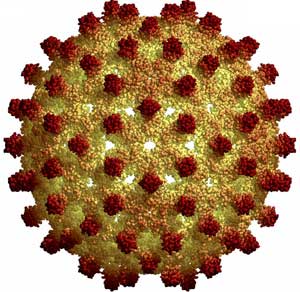Most cases of acute hepatitis are caused by viral infections and present with the following signs and symptoms: Fatigue, malaise, joint pain, abdominal pain, vomiting 2-3 times a day during the first 5 days, loss of appetite, dark urine, fever, enlarged liver, and jaundice.
Some forms of chronic hepatitis exhibit a few of the aforementioned signs and only manifest when the inflammation process prolongs, leading to the replacement of liver cells with connective tissue, ultimately resulting in cirrhosis. Many liver function tests can identify hepatitis.
Hepatitis A: also known as infectious jaundice, is caused by an enteric virus transmitted via the oral route, spreading to individuals through contaminated food. The disease only causes an acute form and does not have a chronic form. The patient’s immune system produces antibodies to combat the disease, providing immunity against future infections.
Individuals with Hepatitis A should rest, stay hydrated, and avoid alcohol. A lifelong vaccine is now available to prevent Hepatitis A infection. The disease can spread through contact, consumption of raw seafood, or drinking contaminated water. Hepatitis A is widespread in poorer countries (referred to as the third world).
Preventing Hepatitis A involves practicing personal hygiene and consuming well-cooked food and boiled water. Two weeks after the first symptoms of hepatitis appear, the virus can be found in the patient’s stool. The incubation period from infection to symptom onset can range from 15 to 45 days.
Hepatitis B:
 |
|
Hepatitis B Virus (Image: bocklabs) |
causes both acute and chronic forms in some patients who cannot eliminate the virus. It is transmitted through blood, tattooing practices, sexual contact, or from mother to child. However, about 50% of cases have an unidentified source of infection.
Sharing needles, especially among drug users, sharing razors, or contact with wounds from infected individuals can increase the risk of disease transmission. In the United States, 95% of patients clear the virus and develop antibodies against Hepatitis B; only 5% of patients remain chronically infected, and only these individuals experience long-term complications from Hepatitis B.
Chronic Hepatitis B patients develop antibodies against the virus, but these antibodies are insufficient to clear the existing infection in the DNA of affected liver cells.
The virus continues to replicate in conjunction with the antibodies, creating a complex immune mechanism observed in these patients. A lifelong vaccine is also available to prevent Hepatitis B. This type of hepatitis causes nearly a million deaths worldwide each year due to complications from chronic hepatitis, cirrhosis, and liver cancer.
In some countries, particularly in Southeast Asia, Hepatitis B is a common disease, with cirrhosis and cancer being significant causes of mortality. There are three FDA-approved medications for treating chronic Hepatitis B: alpha-interferon, adefovir, and lamivudine. Approximately 45% of treated individuals achieve a long-term response.
Hepatitis C: initially referred to as non-A and non-B hepatitis; this form of hepatitis can also be transmitted through blood contact, sexual relations, and can lead to chronic infection and ultimately cirrhosis.
The disease may remain asymptomatic for 10-20 years. Currently, there is no vaccine for Hepatitis C. The disease can become severe if an individual is also infected with Hepatitis A or B, thus all patients with Hepatitis C should be vaccinated against Hepatitis A and Hepatitis B if they are not already immune.
However, Hepatitis C itself is caused by a highly virulent virus that can lead to cirrhosis. If the Hepatitis C virus can be detected early, treatment may involve a combination of interferon and ribavirin (antiviral medication). The response to this combination therapy varies depending on the genotype of the causative virus.
Hepatitis D: The virus causing this form of hepatitis (RNA passenger virus) cannot develop without the presence of the Hepatitis B virus, as it lacks several essential genes in its genetic structure.
Hepatitis E: Causes symptoms similar to Hepatitis A, although the disease can have severe progression in some patients, especially pregnant women.
Hepatitis F: The existence of this form of hepatitis remains uncertain.
Hepatitis G: This form of the disease has recently been discovered.
Additionally, there are many other viruses that can cause infectious hepatitis, including those that cause mumps, rubella, cytomegalovirus, Epstein-Barr virus, herpes simplex virus, and yellow fever.
Dr. ĐÀO XUÂN DŨNG


















































